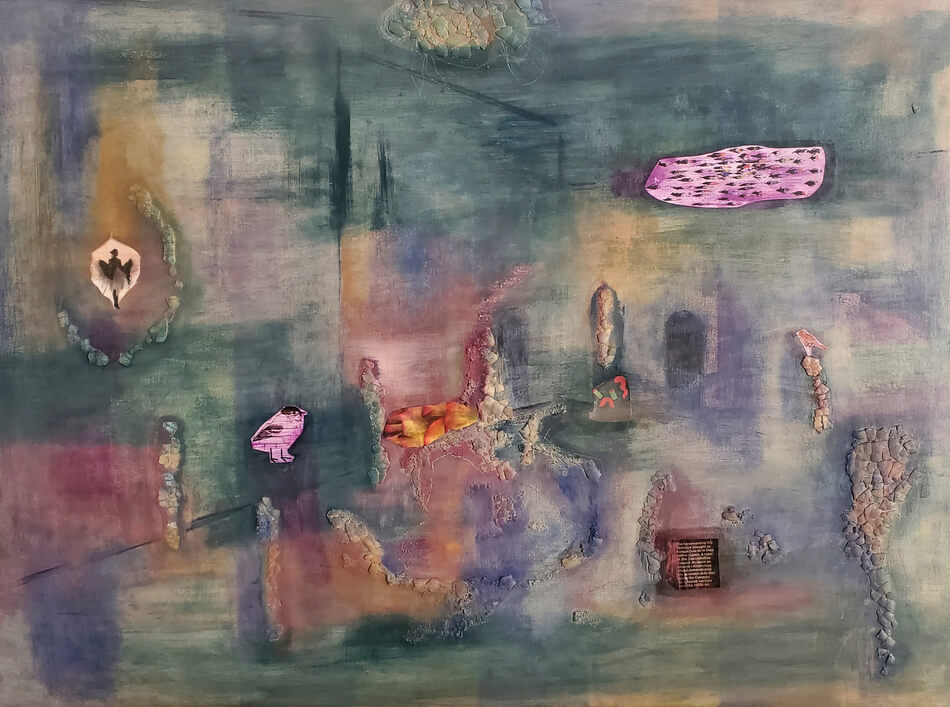“ Art is an active process of communication…”
Paul Zimmerman in conversation with Martha Madrigal
Paul Zimmerman: How did you get interested in art?
Martha Madrigal: I think I was influenced by the encyclopedia era, when I was a kid, I loved spending time in books. Encyclopedias which illustrations were taken from paintings or photographs mostly, every topic I look up in books was represented by a painting which metaphorically clarify the subject. This way of learning was through the experience of someone which I didn’t know but was influenced by. I got interested in telling stories in this fashion.
PZ: Your paintings are about human condition. What is this subject important for you?
MM: For some time, I have been attracted to the physical condition of humanity. The relation between human body and space, the act of dwelling or occupying space have fascinated me. Even the idea of seen human body as a spatial border, that defines its experience from the place. I have developed in my work these ideas in prior years.
At this point of my career, I am questioning myself about the uniqueness of human condition, does man and woman share the same existential experience? Since most thinkers or philosophers are men, they deal with the subject as one kind of experience from their own point of view. Therefore, I am committed to examining my human condition from the question of “the self” as metaphysics has been dealing for so long with the question.
PZ: What is your artistic process? How do you create your paintings?
MM: The process has been changing, mostly images come to me as a riddle, sometimes they are useful, sometimes not. I can work with those images and never become a piece of work. After working with images in drafts, may they will reveal its essence and embody a piece of work through its material features as color, texture, brightness, etc.
PZ: Do you have any particular goal in mind when your start a new piece?
MM: Indeed, art is an active process of communication, it only will be fulfilled by reaching others. I don’t mean exposure or just being watched by many observers. Instead, my motto is creating pieces that may touched others, I mean being inspired, rebuked, or questioning.

PZ: How do you know when the painting is finished?
MM: I must be clear with myself about the expectations of the painting, if not I could get obsessive about the level of detail or layers than the painting should acquire. A time ago, I took borrowed Winnicott’s definition about parenting: “good enough”. Then, when its potential has delved “good enough”, it is time to leave, if I stay longer working with the piece, I could divert from its original concept.
PZ: Has your practice changed over time?
MM: Certainly, in the beginning I was absorbed in aesthetics, I had the drive of representing emotions through simple compositions. Nowadays, I am not afraid of a result lacking this quality if it has a much higher purpose than a search of beauty.
PZ: Which artists are you most influenced by?
MM: A very difficult question, I feel that I am a composition of many styles, I mesmerized with classic art. However, I acquire inspiration from authors as Albrecht Durer, Gustav Klimt, Georgia O’Keefe, George Stefanescu and Gerhard Richter.
PZ: How would you define yourself as an artist?
MM: As a female character executing visual narratives from my point of perspective.
PZ: What are you working on now?
MM: I am working on the perception of the world from a woman perspective, and my own auto perception, since I was raised and educated in a male history context.
PZ: How does the pandemic influence your work and sensibility?
MM: Pandemic for me was a lesson for accepting loss and assembling it into our own story. Fragility was always there, and I had lost sight of it. Witnessing the reconstruction of individuals that experienced damage and being held by their network inspired me the most to keep record of this period through painting.
